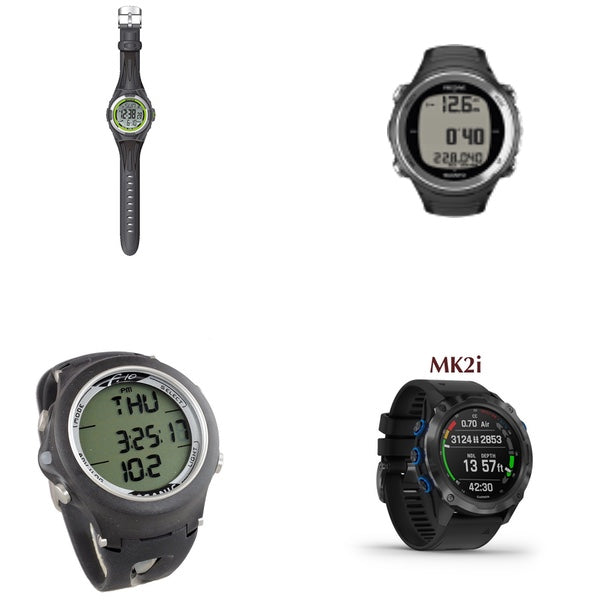
Dive Watches - Safety Equipment and Training Metrics
Dive Watches - Safety Equipment and Training Metrics
Dive watches have gone from a luxury piece of dive gear to being considered almost essential safety equipment over the past decade. There are a wide range of options for freedive watches that vary in capabilities and price.
Dive Watches for Safety
Watches have gained popularity as safety equipment, and rightfully so. Increased research and data from freediving instruction has helped to build a wealth of knowledge about the risks of freediving, especially the shallow water blackout. We now know that the best way to prevent blackouts is to ensure you have a proper breathe up and recovery times from previous dives. Just like resting between sets at the gym, you have to take time to rest and replenish your oxygen between dives. The general rule of thumb for most freediving is taking a breathe up/recovery for three (3) times the time of your last dive. This allows you to properly oxygenate your body and prevent a carbon dioxide buildup in your body.
The watch is helpful because it automatically keeps track of depth, time at depth, and surface time. Those are the minimum requirements for a watch to be considered a dive watch and give you the necessary information for freediving.
Dive Watches for Training
The other benefit to dive watches is for training metrics. Because the nicer ones are able to store data from your dives, they cab help identify areas you can improve as a diver. The bare minimum watches don’t have the best means of transferring data, but many of the higher quality watches have apps available on your phone that transfer data via bluetooth. They show your diving data in easily understood graphs and charts and help you improve further. They also have the added benefit of depth and time alarms you can set to help keep you from exceeding your limits while diving.
